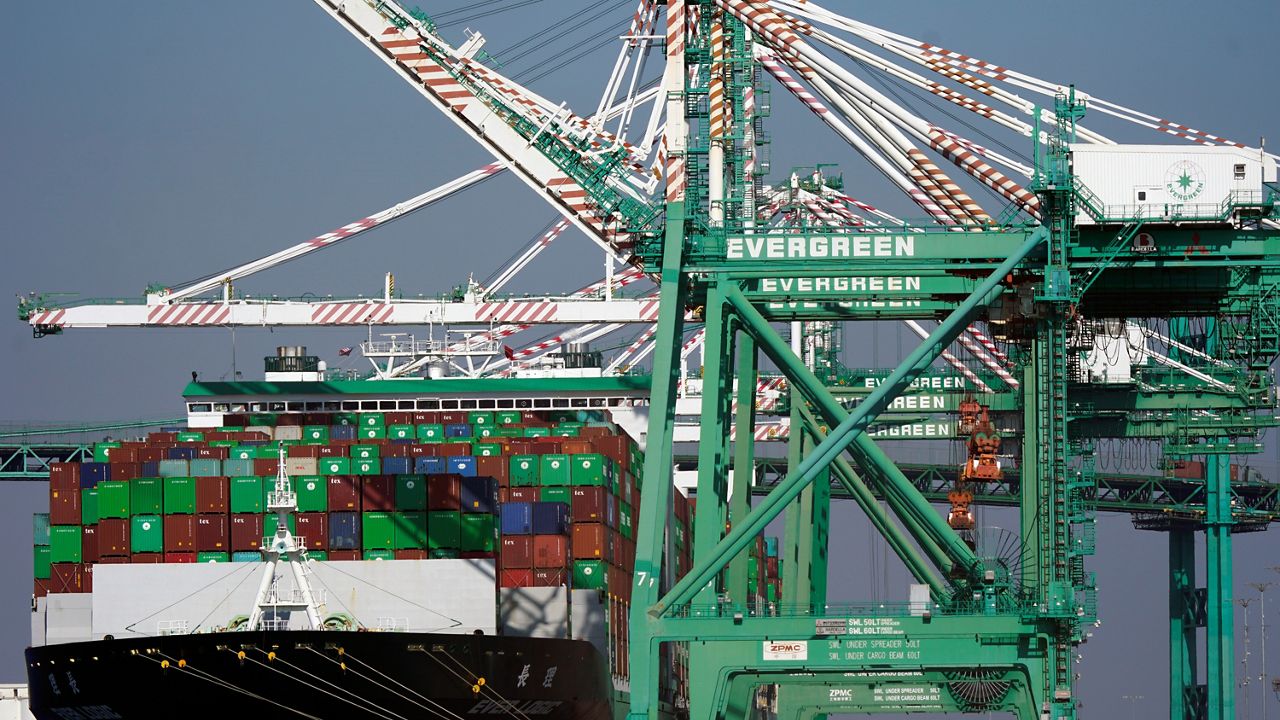A little over a month ago, President Joe Biden announced that his administration negotiated an agreement for the Port of Los Angeles to move to a 24/7 operation in order to help alleviate bottlenecks at the largest port in North America.
The traffic jam of container ships is being partially blamed for tying up the supply chain and driving up consumer prices. The backlog has led to dozens of ships being stuck at the port, unable to offload goods for days and weeks at a time, leaving retailers to warn of some shortages ahead of the holiday season.
But officials cited “great progress” on Tuesday: Since Oct. 24, the number of import containers at the Port of L.A. dropped 25%, and cargo sitting for nine days or more fell by 29%.
“After three weeks while working a record number of ships by our great [International Longshore and Warehouse Union] men and women, we've reduced that 29% on the aging cargo side, and all imports are down about 25%,” Gene Seroka, executive director of the Port of Los Angeles, said Tuesday.
Seroka acknowledged there is much more work still to be done, but was proud of the progress they’ve made.
“There’s much more work to be done on this front but great progress by our dock workers, shipping lines, truckers, marine terminal operators and railroad partners,” he said.
As of Tuesday, there were 84 container ships waiting offshore to get into the Port of Los Angeles or its neighboring sister port in Long Beach, an improvement from some recent days when the number topped 100. In normal busy times, only a handful of ships have to wait to dock.
The two California ports account for 40% of all imports to the United States.
Seroka said that a shortage of truck drivers and nighttime warehouse workers pose problems in establishing a 24/7 schedule, along with getting importers to embrace expanded hours: “It’s an effort to try to get this entire orchestra of supply chain players to get on the same calendar.”
Transportation Secretary Pete Buttigieg agreed with that assessment, saying that moving to a 24/7 schedule is not as easy as “flipping the switch,” adding: “There are so many players, even just on the grounds of port.”
“As so many of us know, decades of under-investment in our supply chain infrastructure, combined with unprecedented consumer demand,” as well as a global pandemic, are “all combining to put our supply chains to the test,” Buttigieg said.
“The warehousing complex traditionally work during the day and they found it difficult to bring in workers during this time,” Seroka noted. “On the trucking side, as we've explained before, drivers have a limit, federally-mandated, of 11 hours behind the wheel every day, and if they work consecutively, they must take a rest. We need to add more drivers.”
Officials touted the recently-signed $1 trillion infrastructure bill — which will provide $17 billion to improve port infrastructure, as well as nearly $45 billion heading directly to the state of California, the largest sum of any state — saying that the funding will help alleviate the backlog at the ports.
The Biden administration also announced a number of other actions to address supply chain issues and fund ports recently, as part of its efforts to help alleviate strain on the supply chain.
The Associated Press contributed to this report.



